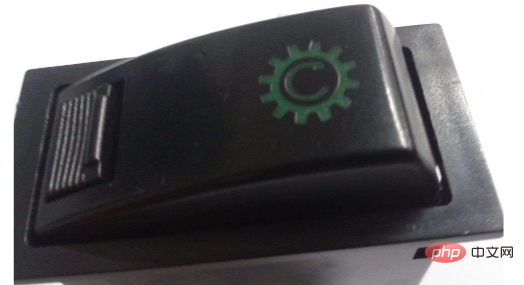
PTO is one or more sets of transmission gears, also known as power output. It is generally composed of a gearbox, clutch, and controller. It is connected to the low-range gear of the transmission or the output shaft of the auxiliary box to transfer the power Output to external working devices, such as lift pumps, etc.

The operating environment of this article: Windows 7 system, DELL G3 computer
Power Take Off (PTO) is a set of or Multiple sets of transmission gears, also known as power outputs, are generally composed of gearboxes, clutches, and controllers. They are connected to the low-range gears of the transmission or the output shaft of the auxiliary box to output power to external working devices, such as lift pumps, etc. . The transmission gears include ordinary external meshing transmission gears, ordinary internal meshing transmission gears and planetary transmission gears.

Extended information
According to different control methods, the power take-off includes mechanical control, hydraulic control, pneumatic control, vacuum source control, electronic control, etc. Control methods, among which air control is more common.
According to the different power output forms, it can usually be divided into transmission side power output form, transmission front power output form, transmission rear power output form, and engine front power output form.
1. Transmission side power output form
Generally, the power is output from a certain gear of the intermediate shaft of the transmission, or the power is output from the reverse cam, due to structural limitations. This power output method can only output one-half of the engine's maximum power, and at most it will not exceed one-half.
So it is called partial power output. It is mostly used in dump trucks, garbage trucks, high-altitude operations, crane trucks and oil tank trucks. The control can be manual mechanical control, or pneumatic, oil pressure, and electromagnetic control switches can be used. To control the engagement and disconnection, it can also be controlled by pushing and pulling the flexible shaft.
2. The power output form of the front part of the transmission is set between the transmission and the clutch, which can obtain the maximum power of the engine, so it is called a full power output power take-off. The design of this kind of power take-off must focus on oil temperature and lubrication. If necessary, forced lubrication and cooling devices can be added. This structure makes the modification of the fire truck more convenient.
3. The power output form at the rear of the transmission
can be roughly divided into the rear end power output form of the intermediate shaft and the rear end power output form of the second shaft.
The power output form of the rear end of the intermediate shaft
The power take-off is directly fixed on the rear end of the transmission, and a spline or a gear is connected to the rear end of the transmission for power output. The maximum power of the engine can be extracted.
Second shaft power output form
The power take-off is fixed on the rear end surface of the transmission, and a gear is installed at the output end of the second shaft as the power output, which can obtain the maximum power of the engine, and The speed can be changed through the gear of the transmission, but the structure is relatively complex and the modification of the transmission is relatively large. The rear-end power output of the above two transmissions is mostly used in fire trucks, concrete mixer trucks, pump trucks, forklifts, etc.
4. Power output form at the front of the engine
Generally, power is output from the crankshaft pulley at the front end of the engine using a triangular leather to drive the power take-off. This output method can take power at any time, but it is only a partial power output. It is mostly used on mixer trucks, as well as free wheel power output and power take-off devices for power output on the transmission shaft.
For more related knowledge, please visit the
FAQThe above is the detailed content of What does pto switch mean? What is it used for?. For more information, please follow other related articles on the PHP Chinese website!
 mybatis first level cache and second level cache
mybatis first level cache and second level cache
 What to do if your IP address is attacked
What to do if your IP address is attacked
 Solution to the problem that the input is not supported when the computer starts up
Solution to the problem that the input is not supported when the computer starts up
 What is the article tag used to define?
What is the article tag used to define?
 Introduction to input functions in c language
Introduction to input functions in c language
 How to use rank function
How to use rank function
 Win10 pauses updates
Win10 pauses updates
 How to set the width of fieldset
How to set the width of fieldset
 Detailed explanation of setinterval
Detailed explanation of setinterval




